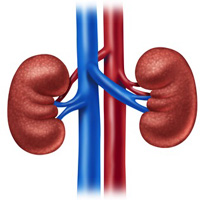 Smart Citations
Smart CitationsSee how this article has been cited at scite.ai
scite shows how a scientific paper has been cited by providing the context of the citation, a classification describing whether it supports, mentions, or contrasts the cited claim, and a label indicating in which section the citation was made.
Outcome of Transperitoneal Laparoscopic Ureterolithotomy (TPLU) for proximal ureteral stone > 15 mm: Our experience with 60 cases
Purpose: We aim to review our experience of transperitoneal laparoscopic ureterolithotomy (TPLU) for proximal ureteric stone more than 15 mm.
Patients and methods: Between June 2017 to December 2020, sixty patients with a history of unsuccessful Extracorporeal shock wave lithotripsy (ESWL) and/or failed ureteroscopy for impacted ureteral calculi more than 15 mm who accepted TPLU were enrolled in our study. The patients' demographic information and post-treatment results were gathered and analyzed, retrospectively.
Results: The patients' mean age was 46.25 ± 12.56 years. The mean size of the stone was 20.11 ± 4.76 mm. 37 (61.7%) patients had severe hydronephrosis (HDN) and 46 (76.7%) stones were radio-opaque. Almost all of the patients underwent TPLU by a single urologist. The mean operation time was 72.86 ± 6.07 minutes without intraoperative complication (only 3 stones had upward migration to the pyelocaliceal system). The main operative blood loss was 88.86 ml. The average length of stay in the hospital was 45.8 ± 8.11 hours. The stone free rate (SFR) at discharge was 57 (95%). The overall complication rate was 27 (45%). Regarding early complications, fever was found in 8 (13.3%) patients, and 3 patients (5%) had paralytic ileus. The rate of urine leak was 8.3%, and 8 (13.3%) patients required blood transfusions. In multivariate analysis, the multiple stones, bigger stone in size, incomplete SFR, longer duration of hospital admission, and severe HDN were associated with a high early complication rate (p = 0.05, 0.04, < 001, 0.03, and 0.01, respectively).
Conclusions: TPLU is a harmless option for managing proximal ureteric stone as a primary procedure or salvage procedure with good outcomes and acceptable complication rates.
Downloads
How to Cite
PAGEPress has chosen to apply the Creative Commons Attribution NonCommercial 4.0 International License (CC BY-NC 4.0) to all manuscripts to be published.

 https://doi.org/10.4081/aiua.2021.3.330
https://doi.org/10.4081/aiua.2021.3.330





